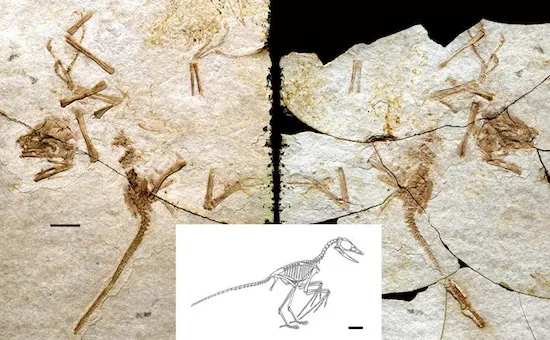Birds are pretty impressive animals: they can fly, have an advanced vocal system and some can be as intelligent as primates. For the past three decades, a mountain of genetic data and comparative studies of ancestral species has suggested that birds arose from ground-dwelling bipedal dinosaurs that gained the ability to fly through a number of small, slow biophysical changes that were up to now very poorly understood.
A recent reexamination of an ancient sparrow-sized fossil from China by American paleontologists Stephen Czerkas and Alan Feduccia suggests that the ancestors of birds were in fact tree-climbing animals that existed well before the first dinosaurs.
The fossil of the Scansoriopteryx, (meaning “climbing wing”), has been identified as undeniably non-dinosaurian via the use of modern structural examination techniques, which allowed previously not visible skeleton parts to be inspected for the first time. The Jurassic fossil also shows many bird-like characteristics, including elongated forelimbs, wing and hindlimb feathers and clawed perching feet.

The researchers propose that Scansoriopteryx used its wing-like appendages for gliding from tree to tree, much like a modern day flying squirrel. Their findings support the theory first proposed in 1900 that birds evolved from small, gliding animals that evolved into true avian birds from the “tree down”.
“The identification of Scansoriopteryx as a non-dinosaurian bird enables a reevaluation in the understanding of the relationship between dinosaurs and birds. Scientists finally have the key to unlock the doors that separate dinosaurs from birds,” explained Czerkas.